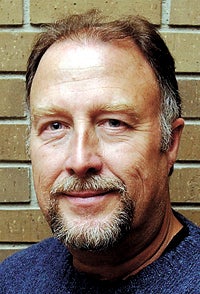Recycling program is 20 years old
Published 9:39 am Monday, May 23, 2011
Column: Randy Tuchtenhagen, Solid Waste Officer
Our recycling program is 20 years old and there have been many changes during that time. Twenty years ago I was hauling trash and a company from Fairmont was collecting our recyclables from the curbside and rural areas.
Twenty years ago people were required to remove the shiny inserts from newspapers, magazines were not recycled and many of the plastic containers we collect today were not allowed. In rural areas a trailer pulled by a pickup truck would stop in advertised locations for two hours and residents brought their recyclables to the driver before moving on to the next city. If you were late and missed the trailer, you had to wait until next time or if you knew what city was next you could drive there to catch the recycler.
This system provided us with an educational opportunity as the driver could talk to residents about what they were bringing to be recycled. Some recycling has not changed and many items are still not recyclable.
For example: We do not take plastic bags. No plastic bags; no exception.
During a tour of the recycling center in the Twin Cities last month, I asked our guide about plastic bags. He pointed out the speed of the conveyor belts (faster than a treadmill) and told our group it was physically impossible to open bags and dump the contents and still keep up with the conveyor.
“We have to throw them out” he told us. “You can’t shut off one conveyor if you fall behind because the entire plant would back up and come to a stop.”
We will continue our campaign to educate people to never put a plastic bag into the recycling, ever.
In the past we have failed to successfully educate people about the three arrows in a triangle with a number inside the symbol.
The logo introduced on April 22, 1970, was designed to suggest paper going over rollers and coming back in an infinite process. When placed on a plastic container it tells us (by the number or letters) what “kind” of plastic the container is made. These numbers or letters inside the arrows or at the bottom of the symbol identify the chemical resin base so they can be sorted by chemical makeup. Plastic containers that do not have a symbol are not recyclable, and containers that do have arrows/numbers might not have recycle value if markets do not accept that type resin.
Our recycling information and instruction sheets list the numbers that are acceptable. We accept more types of plastic than most recycling programs. A copy of those numbers and other recyclable materials can be obtained from our office or the county website at www.co.freeborn.mn.us.
There are new recycling numbers being proposed to identify the new plastic containers being manufactured. With the increased use of compostable bags, plastic pipes, packaging, biodegradable dinner wear and the new thinner walled water bottles the current number system does not always clearly define plastic resin types. Inside the triangle of arrows you soon may see the addition of No. 8 for LLDPE, No. 9 for PLA, and No. 10 for CTC.
It is unclear yet how the identification codes will be updated but we will likely see changes in coming years.
Randy Tuchtenhagen is the solid waste officer for the Freeborn County Environmental Services Department.


